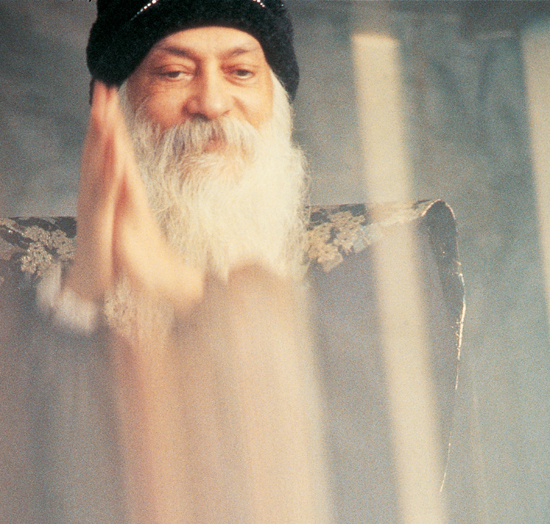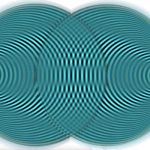Are mind, mana, intellect, buddhi, mind stuff, chitta, and ego, ahankara, separate entities or different names for the same thing?
Are they different from the atman or the soul, or are they are one with it? Are they conscious or unconscious? What is conscious and what is unconscious, and what are their specific places in life?
The first thing is that in this world, matter and consciousness are not two separate things. What we call matter is consciousness asleep, and what we know as consciousness is matter awakened. In reality matter and consciousness are not different; they are different manifestations of the same thing. Existence is one, and that one is godliness or brahman or whatsoever you want to call it. When that one is asleep it appears as matter, and when awake it is consciousness. So don’t treat matter and consciousness as separate entities; they are only utilitarian terms. They are not really different.
Even science has come to the conclusion that there is no such thing as matter. How amusing it is that fifty years ago Nietzsche declared that God is dead, and fifty years from now science will have to declare that God may or may not be dead but matter is certainly dead. As science goes deeper and deeper into matter it finds that matter is no more and only energy remains, only energy is.

What remains after the explosion or splitting of the atom is only particles of energy. And what we know as electrons, protons and neutrons are particles of electricity. In fact, it is not correct to call them particles, because particles imply matter. The scientists had to find a new word, which is quanta, which has a different connotation altogether. Quanta is both a particle and a wave. It is difficult to comprehend how something could be both a particle and a wave simultaneously, but quanta is both. Sometimes it behaves as a particle – which is matter; and sometimes it behaves as a wave – which is energy. Wave and energy are behaviors of the same quanta.
When science dug deep it found that only energy is, and when spirituality delved deep it found that only spirit or atman or soul is. And soul is energy. The time is just around the corner when a synthesis of science and religion will be achieved, and the distance that separates them will simply disappear. When the gap between matter and truth has proved to be false, the gap between science and religion cannot exist for long. If matter and consciousness are not two, how can religion and science be two? The separation of science and religion was dependent on the separation of matter and consciousness.
To me, only one is; two simply don’t exist. There is no place for duality; so the question of matter and consciousness does not arise. If you like the language of matter, you can say that everything is matter. And if you like the language of consciousness, you can say that everything is consciousness. I for one prefer the language of consciousness. Why do I prefer it? Because, in my view, one should always prefer the language of the higher, which has greater potential; one should not prefer the language of the lower, where potential is less and less.
We can, for instance, say that only the seed is, and not the tree. And it is not incorrect to say that, because the tree is only a transformation of the seed. But there is a danger involved in this statement. The danger is that some seeds may say, “If we are seeds all the way, then why seek to become trees? We will remain as we are; we will remain seeds.”
So it is better if we say that only trees are, and not seeds. Then the possibility for the seed to become a tree remains. I prefer the language of consciousness, so that what is asleep can awaken – this possibility should be available.
There is a similarity between the materialist and the spiritualist; both of them accept only one – either matter or consciousness. But there is a difference too. While the materialist accepts the first thing and is thus deprived of the ultimate, the spiritualist accepts the ultimate which includes the first in it. It is all-inclusive; it does not exclude. I love the language of spirituality, and therefore I say that everything is consciousness. Consciousness asleep is matter, and consciousness awakened is consciousness. All is consciousness.
The second thing the friend wants to know is whether mind, intellect, mind stuff, and ego – mana, buddhi, chitta and ahankara – are separate entities or are the same. They are not separate entities; they are many faces of the same mind. It is like asking whether the father, the son and the husband are separate individuals – and I say no, he is one and the same man. We know that the same person is a father in relation to his son, a son in relation to his father, and a husband in relation to his wife. The same man can be a friend to one and an enemy to another. He may be beautiful to one and ugly to another. And the same man may be a master to one and servant to another. But he is one and the same man. If you didn’t know this was his house, and someone tells you that he saw his master there, and another day someone else tells you that his servant lives in that house, and yet another day a young man says that his father lives there, and again a woman informs you that her husband is the owner of that house, then you will conclude that many people – a master, a servant, a father and a husband – live in that particular house. But the fact is that the same person is playing different roles in relation to different people.
Our mind behaves in many ways. When it feels arrogant and says, “I am everything and others are nothing before me,” then mind appears as ego. That is one way of the mind’s behavior. It is ego when it says, “I am everything.” When it declares, “Everyone is just nothing before me” then mind is ego.
And when the mind thinks, cogitates, it is intellect. But when it does not think or cogitate, when it simply moves about, rambles without any sense of direction; when it is unfocused, it is called mind stuff, or chitta. Intellect is mind with a direction, as the mind of a scientist sitting in his lab and thinking how to split the atom. When the mind moves about without any purpose and aim, when it kind of dreams and daydreams, when it thinks of becoming a billionaire or the president of a country, when it is unfocused, then it is chitta or mind stuff. Then it is just waving and wavering, it is incoherent and disorganized. And when it follows a well-laid system of thought, it is intellect.
These are the many ways of the mind. But it is all mind.
And the friend also wants to know if mind, intellect, mind stuff and ego are separate from the soul or the atman.
Do you think that when there is a storm in an ocean, the ocean and the storm are separate? When the ocean is agitated and disturbed, we call it a storm. Similarly when the soul is agitated and disturbed, when it is restless, it is called mind. And when the mind is quiet, it is again soul. Mind is the restless state of the soul, and soul is the quiet and tranquil state of the mind.
In other words, when consciousness is disturbed and agitated, when it is stirred and tempestuous, it is mind. That is why, as long as you are in the mind, you cannot be aware of the atman, the soul. And for the same reason the mind, when it is in meditation, ceases to be. But what does it mean to cease? It means that the waves raging in the sea of the soul have calmed down. It is only then that you know you are a soul. So long as you are disturbed and restless, you know yourself only as a mind.
The restless mind appears in many forms – sometimes as ego, sometimes as intellect and sometimes as mind stuff. These are the different faces of the same restless mind.
The atman and mind are not separate. The atman and the body too are not separate, because the substance, the essence, the reality is one, and all these are transformations of the same thing. And if you know the one, all conflicts with the body or the mind, all strife, come to an end. Once you recognize the one, then it alone remains. Then the one abides in Rama as well as in Ravana. Then you will not worship Rama and kill Ravana. Then you will either worship both or kill both, because the same dwells in both Rama and Ravana.
Essence is one, its expressions are infinite. Truth is one, its forms are many. Existence is one, its faces and gestures are myriad.
But you cannot understand it if you approach it as a philosophy. You can understand it only if you approach it experientially, if you know it as an experience. I am saying all this just to explain it to you; this explanation cannot become your knowing, your experience. You will have to experience it for yourself. And when you enter into one and know it, you will exclaim, “What I had known as body is godliness; what I had known as mind is godliness, and what I had known as atman is also godliness!”
On knowing, only one remains. And this one is so vast, so immense, that all gaps between the knower and the known and knowledge disappear. There, the knower and the known become one. One of the rishis, the seers of the Upanishad, asks, “Who is there who knows? Who is the one who is known? Who is the one who saw? Who is the one who was seen? Who is the one who experienced? And who is the one who was experienced?” No, not even this much separation remains that you can distinguish the knower from the known, that you can say there are two; even the experiencer ceases to be. All distances, all gaps, all separations simply vanish.
But thought cannot live without creating separations and distances. Thought is bound to create distinctions. It will say this is the body, this is mind, this is soul and this is godliness. It will differentiate between the body and mind, between soul and godliness. Thought will bring in separations and divisions which don’t exist.
Why? – because thought cannot encompass and contain the total, the whole, in one piece. It is a very small opening through which things can only be seen piecemeal. If there is a big building with only a small opening in its wall and I try to look through it, will I be able to see the whole house? No. At first a chair will be seen, then a desk, and then the master of the house, and so on and so forth. Through a small opening the house can be seen only in fragments, never the whole of it altogether, because the opening is very small. But if I break open the wall and enter the house, then the whole house is seen as one.
Thought is a very small aperture in the mind through which we try to find truth. Through thought, truth is seen in fragments; truth is fragmented. But when you drop thoughts and enter a thought-free space, which is meditation, then the total is observed. And the day the whole, the total is seen, we exclaim, “It was all one seen in infinite forms!”
But this is possible only through having the experience.
Osho, In Search of the Miraculous, Ch 2, Q 2




Comments are closed.